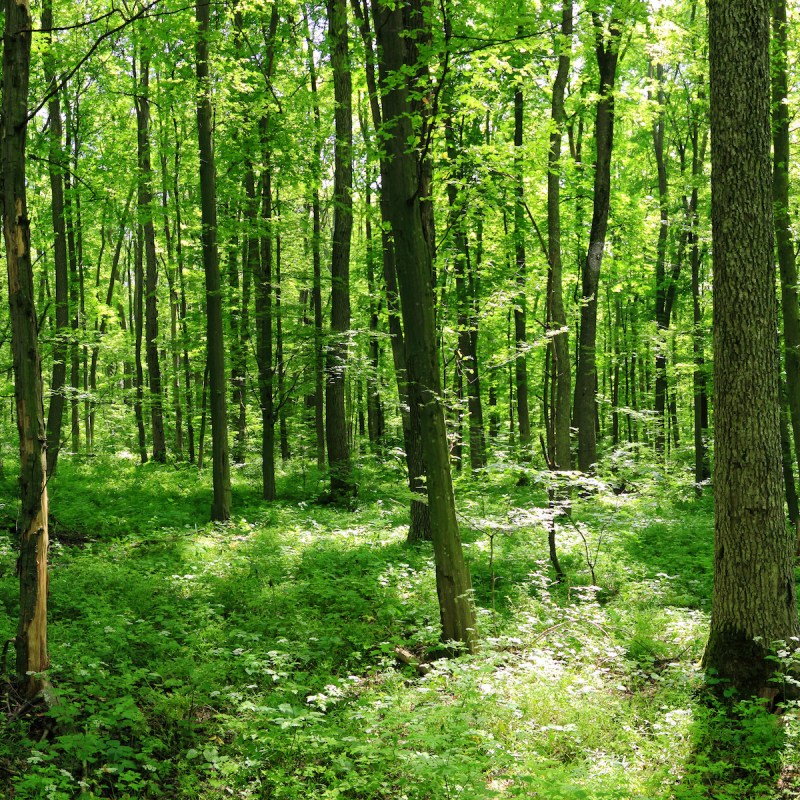
Have you heard of forest bathing? It’s a fully clothed therapeutic walk in the forest, often with a trained guide. In Japan, where it’s called shinrin yoku, forest bathing has been mainstream since the 1980s. The practice has spread around the world.
Videos by TravelAwaits
I was the guest of Ronna Schneberger, a forest bathing guide. Through her business, Forest Fix, Ronna offers coaching, leadership, and personal development programs. She draws on her years of experience as a professional hiking and nature guide to expertly lead transformational outdoor experiences for individuals and groups.
We met on a pleasant October day in Canmore, Alberta, Canada, a scenic mountain town near Banff National Park.

The Book That Got People Talking About Shinrin Yoku
Forest bathing got a big boost in the English-speaking world in 2018 with the book Forest Bathing: How Trees Can Help You Find Health And Happiness by Dr. Qing Li.
Dr. Li, a physician in Japan, is a leader in the practice of forest medicine — medicine applying the health-giving properties of forests. Ancient wisdom says being in nature is good for us. Dr. Li studied the science behind the idea.

1. Forest Bathing Reduces Stress
The terrible phenomenon of death by overwork and concern about the stressful lives many urban Japanese were living by the 1980s led to shinrin yoku catching on. Even a little exposure to the forest can have long-lasting benefits. According to Dr. Li, shinrin yoku has become standard practice for stress management in Japan.
Forest bathing calms the sympathetic nervous system, which gives us the fight or flight response to stress. Fight or flight is helpful when we see an oncoming tiger or car. The problem is that too many things turn on this reaction: an angry boss, a ringing phone, a traffic jam, and so on.
Chronic stress leads to chronically high levels of the stress hormone cortisol, and a host of health issues.
Forest bathing can calm things down, lower cortisol, lower blood pressure, and help stressed people get back to normal.

2. Forest Bathing Changes Our Focus
Online, and when we’re out and about in the city, hundreds of things distract us. We have to be alert just to walk down the street. The focused attention we use is called voluntary or directed attention. Concentrating like this takes effort and energy.
Turning off the demands of directed attention reduces stress.
As Ronna and I left Canmore’s in-town trail system and entered the forest, we crossed an invisible line. We turned off our phones, disconnected, and relaxed.
In the quiet forest, we were free from all those things that interrupt and alarm us. Instead of directed attention, we allowed involuntary attention to take over. When we feel safe, as I did with Ronna, we relax and let our senses explore our surroundings. This is “soft fascination,” where we open ourselves to the experience and stop trying so hard.

3. Forest Bathing Can Improve Sleep
The benefits of forest bathing last after you leave the woods. One welcome effect is better quality sleep and more of it. This lowers the risk of the serious health problems that stress can cause.
Dr. Li took 12 highly stressed Japanese office workers on a forest bathing retreat for a few days. Each morning and afternoon, they walked in the woods for about two hours. During the retreat, they slept over an hour more per night than they had done before. The night after, they still got half an hour more sleep.
Another study showed that after a two-hour forest walk, the average participant slept almost an hour longer than on the night before the forest bathing.

4. Forest Bathing Improves Mood And Concentration
Using standard tests to assess participants’ moods before and after forest bathing, studies have shown an improvement in mood after 2 hours in the forest. Walking anywhere, even in busy Tokyo, resulted in less anxiety, depression, anger, and confusion. However, feelings of vigor and fatigue were improved only by walking in the forest.
I wasn’t thinking about my mood and concentration when Ronna and I went out. I was simply enjoying being there. The tall lodgepole pines were widely spaced, creating a very open, airy woods. At times, I could see the nearby mountains through gaps in the trees. A few needles and twigs crackled underfoot and the occasional squirrel scolded us.
From time to time, Ronna stopped and said, “This is an invitation.” Many guides use a forest bathing framework based on a series of invitations. The invitations are chosen to suit the environment and the people.
Each invitation suggested a new way of getting closer to the forest, especially to the trees. The language of Ronna’s invitations is carefully chosen and trauma-informed. “Each person has a choice whether to close their eyes or not, for example,” she said.
Pro Tip: Forest bathing is a safe and gentle practice. No matter what the invitation is, you are in control of how you choose to respond.

5. Forest Bathing Boosts The Immune System
One of the most fascinating things about forest bathing is that we get benefits just by breathing. The air quality in a forest is improved because plants release oxygen, filter pollutants, and moderate the temperature and humidity, but there’s more to it.
Ronna said, “Trees also give off chemicals called phytoncides. These are natural immune boosters.”
Phytoncides in general are volatile compounds that plants release to defend themselves against attacking organisms, including bacteria and insects. There are numerous phytoncides in nature, but only a few have been studied in connection with forest therapy.
One of Dr. Li’s experiments looked at the effect of breathing air enriched with the essential oils of the Hinoki cypress (Chamaecyparis obtusa) in a controlled environment. Men who slept in an urban hotel room with the essential oils diffused into the air showed an improvement in their immune systems. The level of NK (Natural Killer) cells in their blood went up. NK cells are white blood cells that protect us against some viruses and cancers.
The essential oils in the experiment contained the same phytoncides as the trees release naturally in the forest.

6. Rebuilding A Sense Of Connection
In addition to awakening our five familiar senses, forest bathing taps into our sense of awe and wonder. Making a connection to something greater than ourselves can be a profound experience.
Ronna mentioned that some people feel quite emotional when they go into the forest with her. Others say they feel calmer, or more creative, or more ready to try a challenge.
Forest therapy is not like going to the drugstore and coming home with a remedy. It’s more of a strengthening of the relationship between yourself and the natural world. The idea is to be open to whatever experience comes to you. Have no expectations about exactly what will happen.
Forest bathing is not a vigorous hike. It’s not goal-oriented and it’s certainly not competitive.
As each invitation came to a close, we had the chance to share a few words about what we had experienced. It was completely up to me to say something or not. Most of the forest bathing was quiet, and if I didn’t want to share my thoughts, that was fine, too. I could see that this experience could be a way of strengthening our relationships with other people as well as with nature.
Forest Bathing Is Accessible To Everyone
Anyone can practice forest bathing. Ronna regularly offers sessions done with people online.
Looking at images of forests, being around living plants indoors, and having a window looking out onto a green space can all be beneficial to your health.
The immersive outdoor forest bathing experience can be modified to suit the individual. You don’t have to be able to walk in the forest, nor to be able to see, hear, smell, or taste the plants and the surroundings. “It’s extremely adaptable,” says Ronna.
Pro Tip: Be sure to tell the guide when booking if you have any mobility or other concerns. Before bringing children, ask if the program will be suitable. Ronna offers programs specifically for children.

Ending With Tea
Ronna and I spent about 2 hours together and walked only a short distance, making several stops along the way.
The last invitation was to share the taste of the forest, often drinking tea made from the ingredients at hand. Ronna treated me to a warm and delicious rosehip and spruce tea full of immune-boosting vitamin C.
We talked about the overall experience of being in the forest together. Both of us were very grateful for this beautiful place so close to home.
I felt energized and rested after my time in the woods.
How Long Does Forest Bathing Take?
Forest bathing with a guide typically takes 2 to 4 hours.
On your own, about 20 minutes a day is a suggested minimum.
Pro Tip: Dress for the weather. Forest bathing can be done in all but the harshest conditions. Because the pace is slow, it’s best to overdress in cooler seasons.
If you’re looking for places to hike in and reap the rewards, check out these articles:
